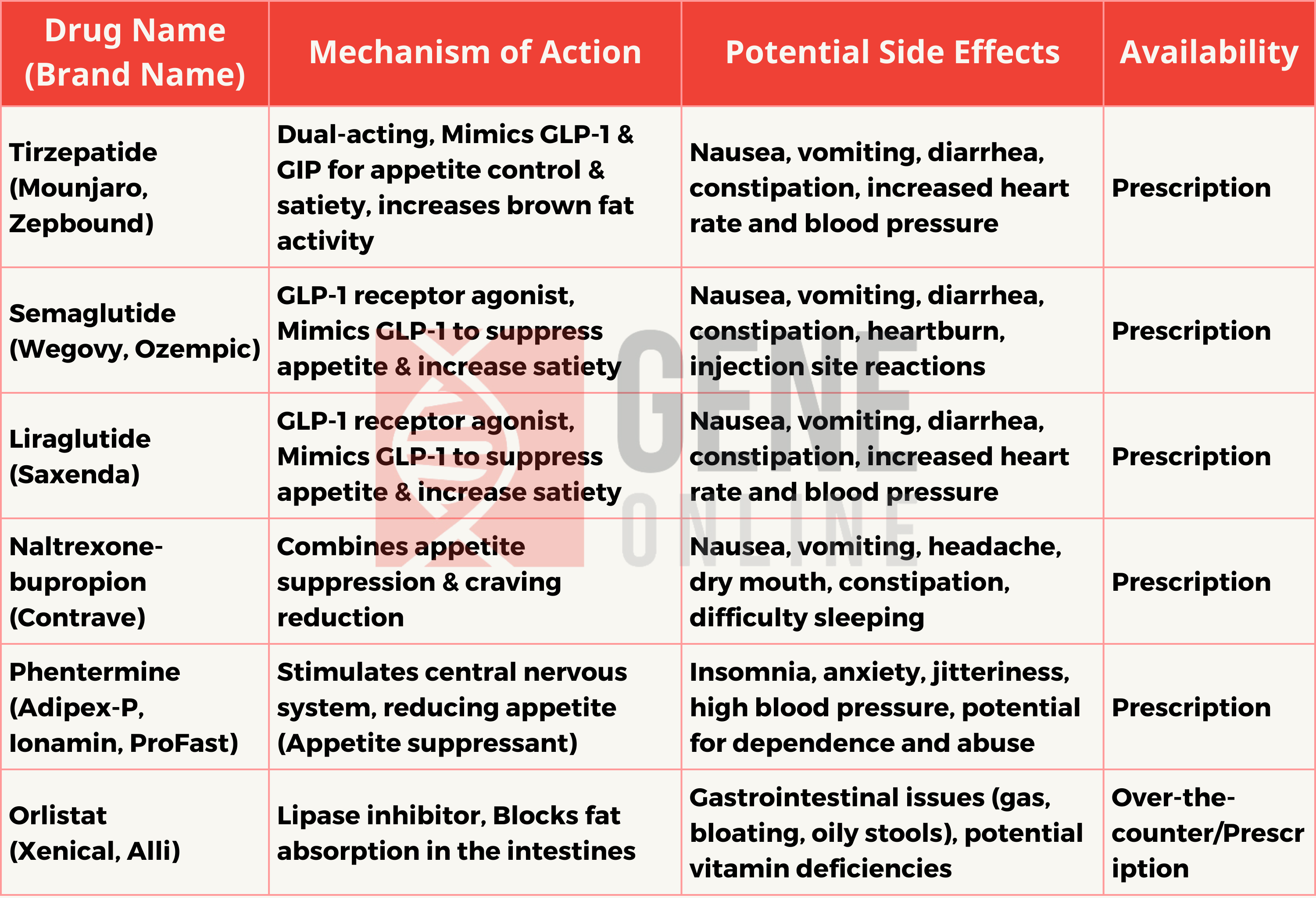Obesity Hope or Hype: Leveraging the Efficacy of Mainstream Weight Loss Pills (Second Part)
Following the First Part of the article, let’s talk about the mechanism behind these magical pills.
Mechanisms of Action

Semaglutide and Liraglutide
Paschos et al. found that semaglutide and liraglutide, both GLP-1 receptor agonists, mimic GLP-1 to suppress appetite and increase satiety in . This mechanism of action involves the activation of GLP-1 receptors, leading to reduced appetite and increased feelings of fullness.
Orlistat
Bloemendaal et al. reported that orlistat, a lipase inhibitor, blocks fat absorption in the intestines. By inhibiting the activity of lipase enzymes, orlistat reduces the hydrolysis of dietary fats, leading to decreased fat absorption and subsequent weight loss.
Tirzepatide
Tirzepatide, a dual-acting drug, was found to mimic GLP-1 and GIP to control appetite and satiety, while also increasing brown fat activity. This dual mechanism of action targets multiple pathways involved in weight regulation, potentially making it a more effective anti-obesity treatment.
Phentermine
Phentermine, an appetite suppressant, was shown to stimulate the central nervous system, thereby reducing appetite. This finding suggests that the mechanism of action of phentermine primarily involves neurological pathways that regulate appetite and food intake.
Naltrexone-Bupropion
Naltrexone-bupropion, which combines appetite suppression and craving reduction, targets both the physiological and psychological components of overeating and obesity. This dual approach may address the multifaceted nature of obesity and overeating behaviors.
Knowledge Gaps and Future Directions
Despite the progress in understanding the mechanisms of action of these anti-obesity drugs, there are still knowledge gaps that warrant further investigation. For instance, Pepino et al. conducted a study on the fatty acid translocase gene CD36 and lingual lipase and their influence on oral sensitivity to fat in obese subjects. However, the implications of these findings for the development of anti-obesity drugs remain unclear, highlighting the need for more research in this area.
Furthermore, additional studies are needed to elucidate the long-term efficacy and safety of these drugs, as well as their potential for combination therapies. Comparative effectiveness research could also provide valuable insights into the relative benefits and drawbacks of different anti-obesity drugs, helping to guide clinical decision-making.
In conclusion, the literature on the mechanisms of action of anti-obesity drugs demonstrates the diverse approaches taken to address the complex problem of obesity. Future research should aim to fill existing knowledge gaps, explore novel targets, and evaluate the long-term effectiveness and safety of these drugs, ultimately contributing to the development of more effective and personalized anti-obesity treatments.
References:
- van Bloemendaal, L. et al. GLP-1 Receptor Activation Modulates Appetite- and Reward-Related Brain Areas in Humans. Diabetes 63, 4186–4196 (2014).
- Paschos, G. K. et al. Obesity in mice with adipocyte-specific deletion of clock component Arntl. Nat Med 18, 1768–1777 (2012).
- Pepino, M. Y., Love-Gregory, L., Klein, S. & Abumrad, N. A. The fatty acid translocase gene CD36 and lingual lipase influence oral sensitivity to fat in obese subjects. Journal of Lipid Research 53, 561–566 (2012).









